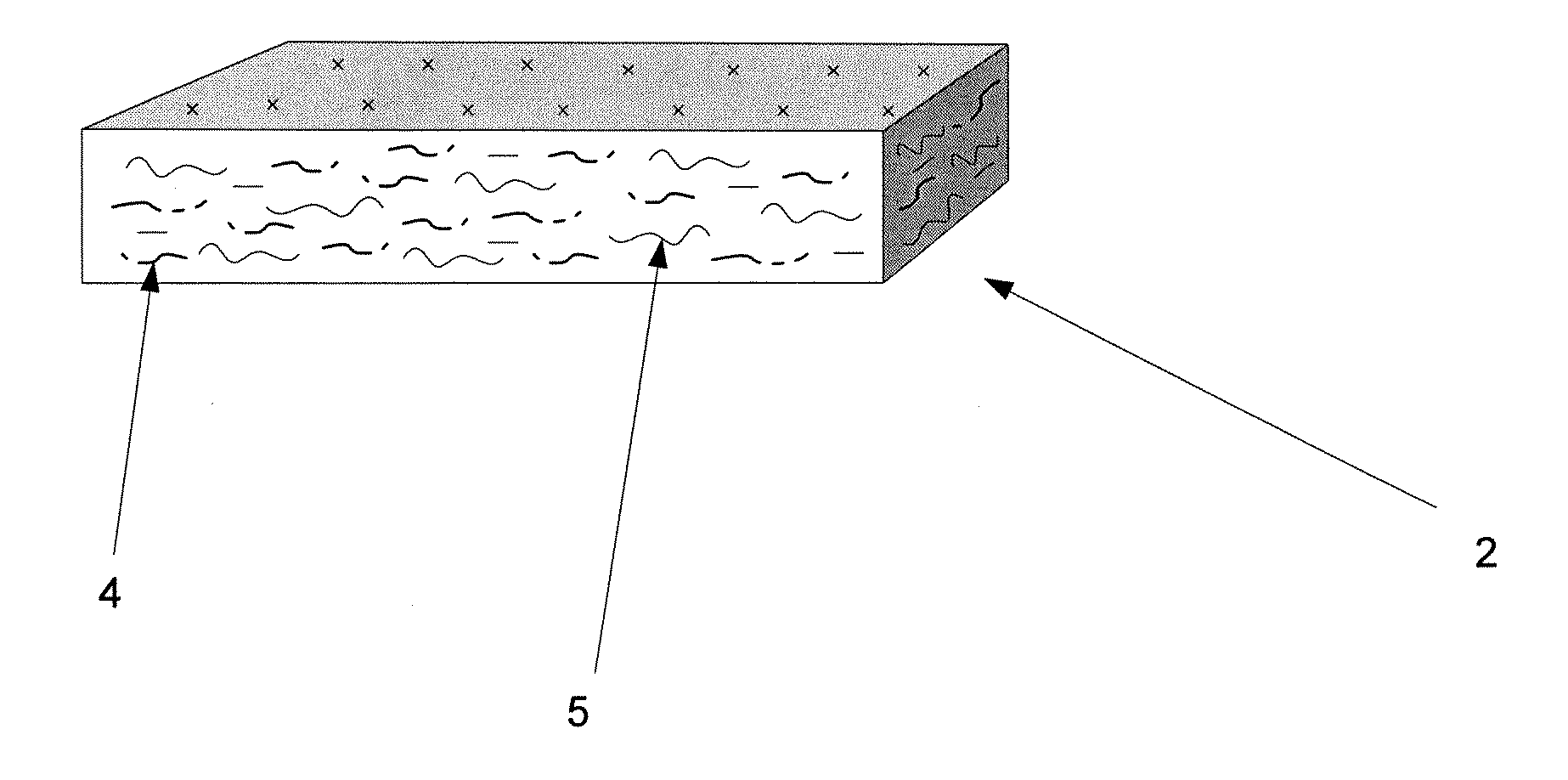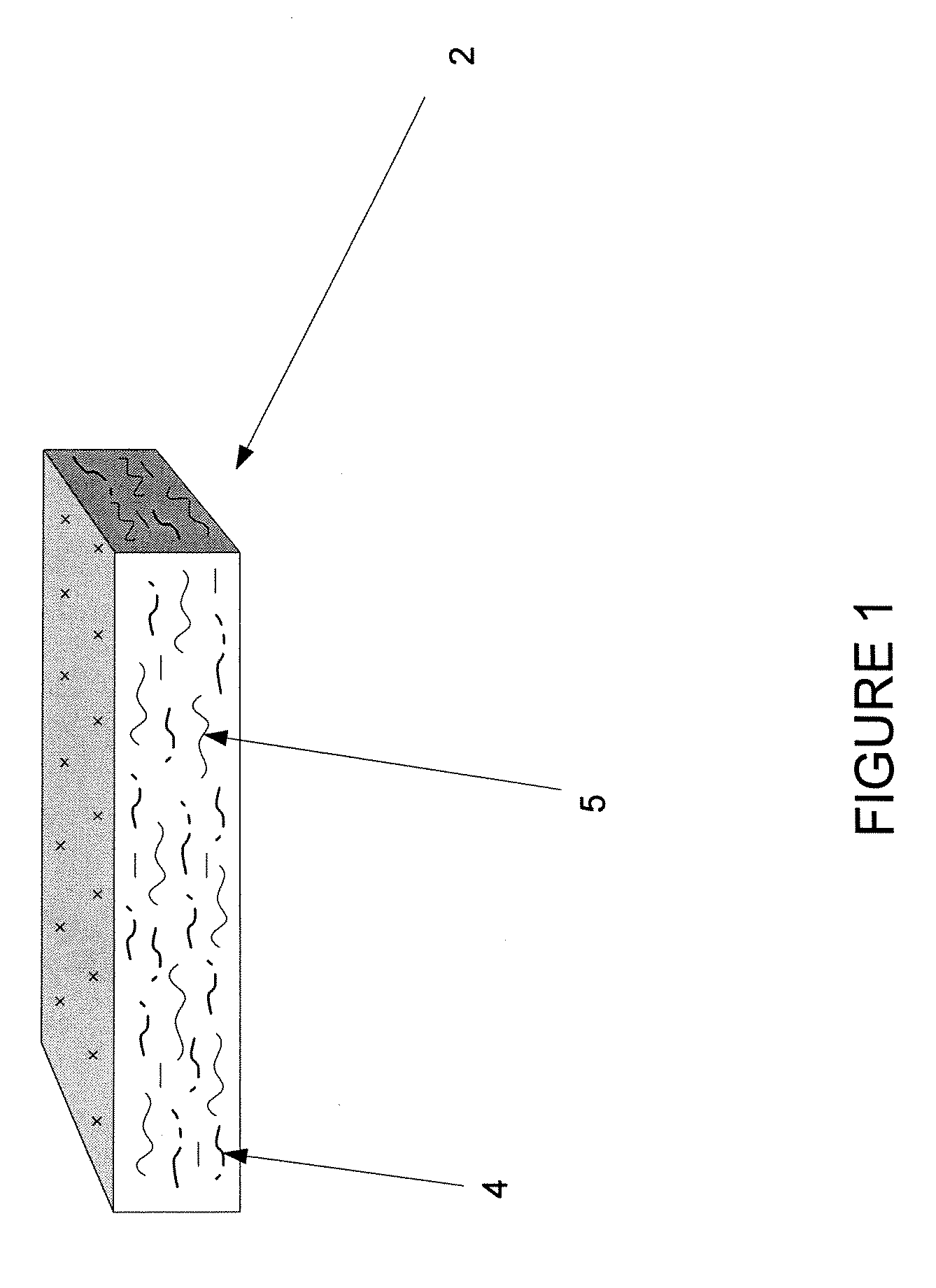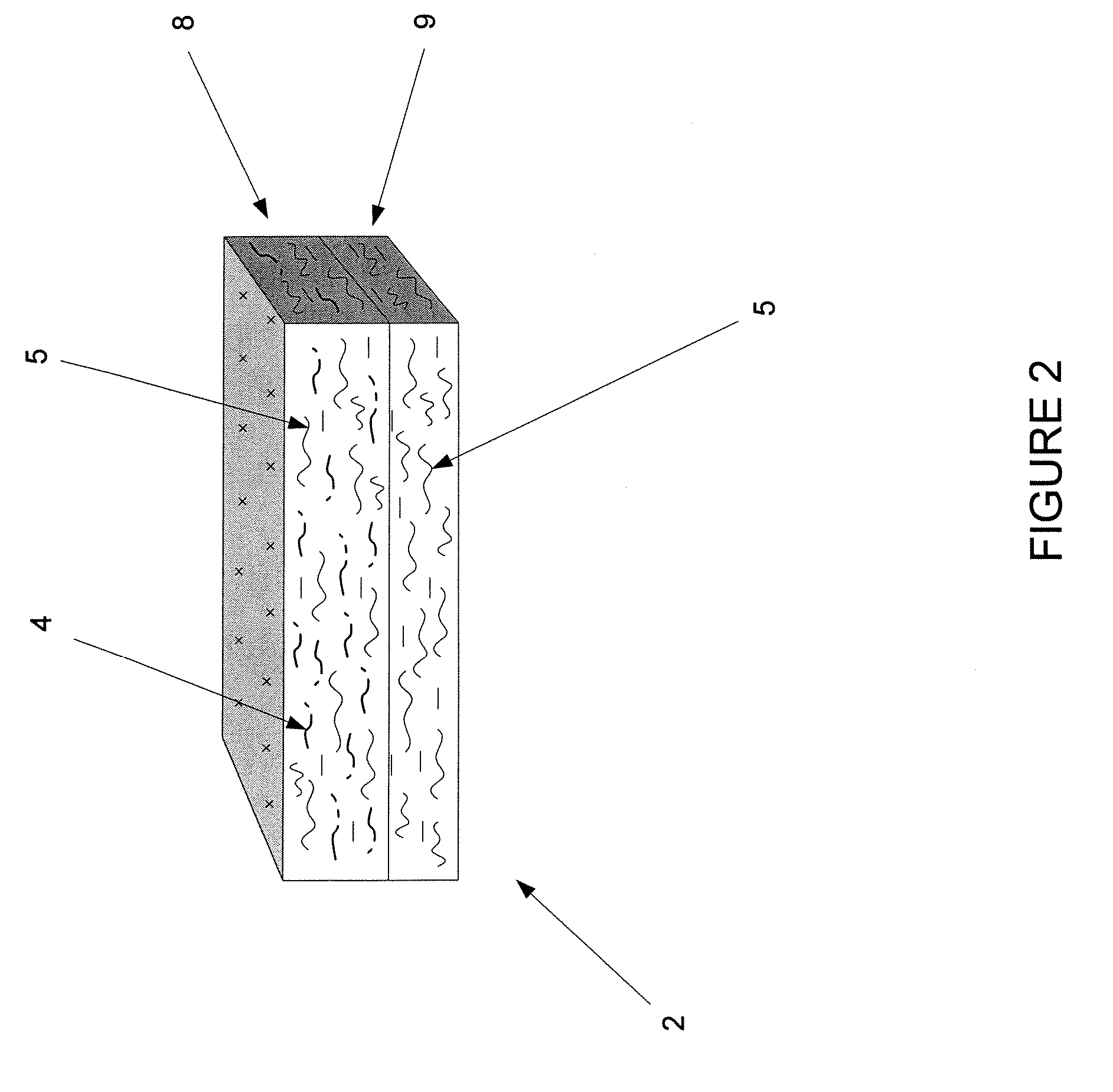Protective flame barrier product
a flame barrier and flame technology, applied in the field of protective flame barrier products, can solve the problems of thousands of deaths, prone to smoldering, and many of these materials, while smolder-resistant, are more prone to being ignited by open flames
- Summary
- Abstract
- Description
- Claims
- Application Information
AI Technical Summary
Problems solved by technology
Method used
Image
Examples
example 1
[0045] A non-highloft product is produced by placing fibers into hoppers, additionally passing the low melt fiber through a fine opener, electronically weighing the fibers and depositing them on a common conveyor, feeding the various fibers together through a mixing chamber, garnetting, crosslapping, needle punching, thermally bonding, slitting, cutting to length, and packaging by means of techniques known to those of skill in the textile manufacturing industry. The fiber blend consists of the following by weight: 15% polyester / polyester (PET / PET) sheath core binder fiber with the sheath have a 100 degree C. melting point and the core having a 260 degree C. melting temperature (a category 3 fiber); 40% modacrylic fiber (Kaneka Corporation, Japan) (a category 2 fiber); and 45% cotton fiber treated with boric acid for fire resistance (a category 4 fiber). Product thickness is approximately 6 mm, with a basis weight of 300 gm / m2. The product demonstrated sufficient flame barrier proper...
example 2
[0046] A non-highloft product is produced by placing the fibers into hoppers, additionally passing the low melt fiber through a fine opener, electronically weighing the various fibers, depositing the fibers on a common conveyor, feeding the fibers through a mixing chamber, garnetting, crosslapping, needle punching, thermally bonding, slitting, cutting to length, and packaging. The fiber blend consists of the following by weight: 15% polyester / polyester (PET / PET) sheath core binder fiber with the sheath have a 100 degree C. melting point and the core having a 260 degree C. melting temperature; 10% inherently flame-retardant para-aramid fiber (a category 1 fiber); and 75% cotton fiber treated with boric acid for fire resistance. Product thickness is approximately 6 mm with a basis weight of 300 gm / m2. This product also meets the requirements for flame barrier material for mattress / boxspring border applications.
example 3
[0047] A highloft product is produced by placing the fibers into hoppers, additionally passing the low melt fiber through a fine opener, are electronically weighing the various fibers and depositing them on a common conveyor, feeding the fibers through a mixing chamber, garnetting, crosslapping, passing the fibers through a thermal bonding oven, slitting, cutting to length and packaging. The fiber blend consists of the following by weight: 15% polyester / polyester (PET / PET) sheath core binder fiber with the sheath have a 100 degree C. melting point and the core having a 260 degree C. melting temperature; 40% modacrylic fiber; and 45% untreated cotton fiber. Product thickness is approximately 12 mm with a basis weight of 170 gm / m2. This product meets the requirements for a flame barrier, and is particularly useful for forming filling of bed clothing products.
[0048] The bedding product of the present invention provides a significant improvement in fire retardancy without adding signif...
PUM
| Property | Measurement | Unit |
|---|---|---|
| Melting point | aaaaa | aaaaa |
| aaaaa | aaaaa |
Abstract
Description
Claims
Application Information
 Login to View More
Login to View More - R&D
- Intellectual Property
- Life Sciences
- Materials
- Tech Scout
- Unparalleled Data Quality
- Higher Quality Content
- 60% Fewer Hallucinations
Browse by: Latest US Patents, China's latest patents, Technical Efficacy Thesaurus, Application Domain, Technology Topic, Popular Technical Reports.
© 2025 PatSnap. All rights reserved.Legal|Privacy policy|Modern Slavery Act Transparency Statement|Sitemap|About US| Contact US: help@patsnap.com



